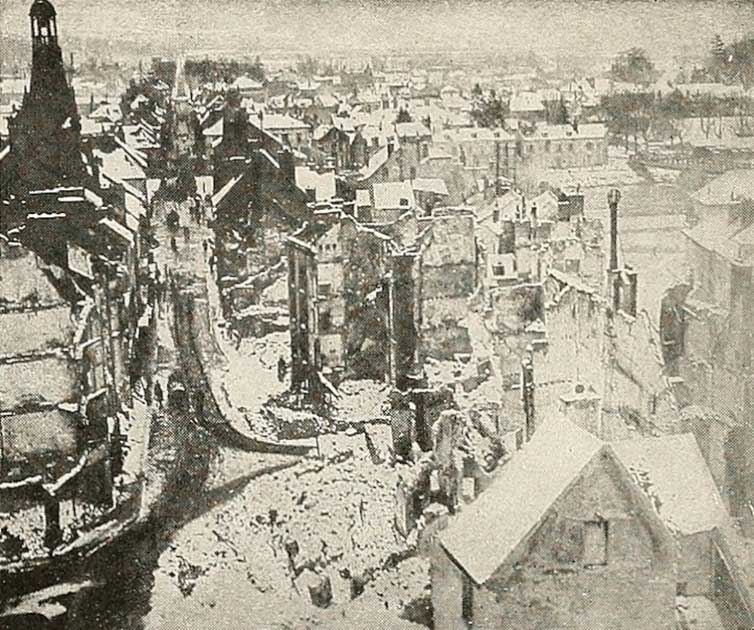Most people would imagine war heroes as humans with a penchant for battle. Irrespective of the detrimental consequences of war, it becomes inevitable at certain times.
However, it is not always the humans who turn out to be war heroes. Sometimes heroism comes in strange forms, and this was certainly the case for a pigeon named Cher Ami, who saved around 200 lives in the First World War.
Unrealistic as it may sound, Cher Ami, meaning “Dear Friend” in French, was truly considered a hero by the US veterans he saved. How did this come to be?
Who Was Cher Ami?
The story of Cher Ami begins in 1918, the year of his birth. British pigeon fanciers had donated the male homing pigeon to the US Army Signal Corps. Homing pigeons have always proved their capabilities for locating their homes and finding their way through unknown places.
Cher Ami was incorporated in the Signal Corps alongside 600 other pigeons, who were sent to France to support communication in World War One. Cher Ami was trained by the US to exchange messages on the battlefield.
It is important to note that radio and telephone were new technologies at the time of First World War. At the same time, it was difficult to access radio and telephones easily on the battlefield.

The US Army identified the possibilities for using homing pigeons in 1914, during the initial days of the First World War. Upon this discovery, the US Army established the foundations of the Signal Corps.
In doing so, they were utilizing a poorly understood but vital aspect of pigeon behavior. John Hagstrum established the reasons behind the homing ability of pigeons as late as 2013 through a detailed study. The geologist working at the United States Geological Survey showed that pigeons could use a “sound map” to navigate their way.
- Mary Batemen: the Witch Whose Chickens Could Predict the Apocalypse?
- Saved, by St George! Who or What were the Angels of Mons?
What is the sound map? Apparently, pigeons can hear low-frequency sounds, which helps them create the ‘sound map’ in their heads. The sound map helps pigeons find their way through unknown terrain and transfer messages easily.
Pigeons had become an important and reliable tool for communication during the war. Radios were large, ungainly and unreliable devices and using them to communicate involved the arduous and challenging task of laying new wires to facilitate communication.
While pigeons were not the preferred choice for communication, they offered the best alternative for exchanging messages during wartime. Interestingly, homing pigeons could fly at an incredible speed of almost fifty miles an hour (80 kmh), thereby meaning faster transfer of messages.
How Did Cher Ami Save 200 Soldiers?
The method of using homing pigeons for transferring messages during war seemed plausible on paper. What’s more interesting is that homing pigeons stood up to the challenge. However, sending messages through pigeons also invited many other consequences. For starters, homing pigeons were easy targets for enemy forces, irrespective of speed.
German troops trained in operating MG 08 machine guns would spot and kill the pigeons, firing almost 500 rounds each minute at the hapless birds. At the same time, it is also important to note that pigeons could risk interception of messages by enemy forces upon being shot down.
Therefore, life for humans, as well as pigeons, was not as easy as it seemed during the war. Amidst all these challenges, Cher Ami was able to achieve the impossible and saved almost 200 soldiers trapped in battle.
American soldiers of the 77th Division entered deep into the Argonne Forest on October 2, 1918, and became inadvertently trapped behind enemy lines. In total over 550 men were trapped without food, supplies or ammunition within a small depression on the slope of a hill.

The men from 306th, 307th and 308th regiments had been trapped and were soon engaged in a fierce firefight against the Germans. With a larger German force opposing them, the men of the “Lost Battalion” maintained their position while many soldiers laid down their lives.
- The Right To Bear Arms: The Famous Polish Corporal Wojtek
- Shergar: Who Kidnapped the Most Famous Racehorse in the World?
At that point in time, the threat on the ground was topped with a torrential downpour, making the most unpleasant situation to be in the middle. The situation was sorse then hopeless.
If the wrath of enemy artillery, guns and nature were not enough, the “Lost Battalion” was also being accidentally bombarded by Allied Forces. Without any information about their location and their positioning behind enemy lines, the Allied Forces believed them to be the enemy. Over the next few days, casualties started increasing at an inexplicable rate while the supplies and ammunition had been depleted.
Major Charles Whittlesey, the leader of the “Lost Battalion,” tried sending many pigeons with messages to their allies. However, all of them were shot, making the situation miserable for the soldiers. Finally, Major Whittlesey sent out Cher Ami as the last hope for survival. As the brave bird took flight, it got caught up in the middle of German gunfire and was shot.
Down, but not out. All the soldiers saw the pigeon fall down to the ground before getting up and taking flight. Within almost half an hour, Cher Ami covered the distance of 25 miles and reached the base alive, although wounded. Subsequently, the artillery shifted the firing positions toward the German forces and offered the 77th a chance to escape.
What Happened to Cher Ami?
The heroic feat of Cher Ami in World War One came with a sacrifice. The brave pigeon had lost one eye and a leg and was shot through the breast. It received the Croix de Guerre from the French government as a reward for the formidable bravery it had shown on the battlefield.
As a veteran of 12 missions, Cher Ami deserved the adulation of America. As General John Pershing stated in honor of Cher Ami, the United States could not have done too much for the bird in return for its help.

The brave homing pigeon returned to the United States, and his trainer, Captain John Carney, took care of him. Cher Ami died in June 1919 at Fort Monmouth in New Jersey, at the grand old age of one.
Today, you can find his body on display at the Smithsonian Museum of American History, where it was mounted by a taxidermist in 1921. The story of Cher Ami proves how some warriors could make an impact, no matter what they are. As one of the notable moments in American history, the grit of Cher Ami will always remain an inspiration for Americans.
Top Image: Despite being shot, the homing pigeon Cher Ami managed to get through and rescued almost 200 soldiers. Source: Stockphoto Mania / Adobe Stock.
By Bipin Dimri